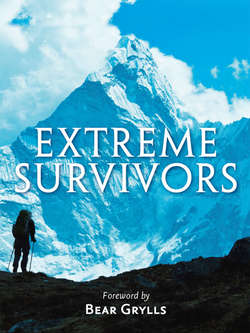Читать книгу Extreme Survivors: 60 of the World’s Most Extreme Survival Stories - Collins Maps - Страница 39
Norman Ollestad skiing. Flight of the champion
ОглавлениеIt was 7 a.m. on 19 February 1979 and sunny in Santa Monica. The three passengers who followed their pilot into the little Cessna 172 were in high spirits, and not just because of the weather. The day before, Norman Ollestad, just eleven years old, had won Southern California Slalom Skiing Championship. His father, Norman Senior, 43, was an incredibly driven and charismatic man who encouraged his son to go right to the edge in life – and then see what was on the other side.
Ollestad Senior had driven his son back home to the coast for hockey practice the same evening as his slalom triumph. And now, the day after, he had chartered the plane and pilot to return to the resort of Big Bear so his son could collect his trophy and get in a little extra ski training.
The pilot climbed into his seat and put on his headphones. Norman Jnr was stepping into the back seat when his dad pointed up front. Norman couldn’t believe it – he was going to sit next to the pilot! His dad slipped into the back of the tiny aircraft and helped the third passenger aboard, his girlfriend Sandra, 30.
The plane taxied and sped down the runway. As it rose into the blue California sun, Norman felt a surge of excitement. But as they banked east over Venice Beach, it was clear there was a storm ahead.
In front of them a thick blanket of grey cloud was smothering the San Bernardino Mountains. Only the very tips of their 3,000 m (10,000 ft) peaks showed above the gloom.
Norman Senior asked the pilot if it was okay to fly in that weather. The pilot reassured them: it was just a thirty-minute hop. They’d stay low and pop through the mountains to Big Bear before they knew it. Norman wondered if he’d be able to see the slope he’d won the championship on when they wheeled round Mount Baldy. His dad nodded and sat back to read the paper and whistle a Willie Nelson tune.
Up front, Norman was savouring every moment. He stretched up to see over the plane’s dashboard and listened to the air traffic chatter on his headphones. As the foothills rose below them, he heard Burbank control pass their plane on to Pomona Control. The pilot told Pomona he wanted to stay below 2,300 m (7,500 ft) because of low freezing levels. Then a private plane radioed a warning against flying into the Big Bear area without decent instruments.
Suddenly, the sun went out. The greyness was all around them, as thick as soup. They had pierced the storm. The plane shook and lurched.
A tree seemed to flit by in the mist, its spiky fingers lunging at the window. But that couldn’t be, not up here. Then there really was a branch outside and with a sickening yawn, time slowed down and the horror unfurled.
Norman instinctively curled into a ball. A wing clipped into a tree, tumbling the plane round, up, down, over and round. The spinning only stopped when they slammed into the rugged north face of Ontario Peak. The plane was instantly smashed into debris and the passengers hurled across an icy gully. And there they lay, sprawled amid the wreckage, 75 m (250 ft) from the top of the 2,650 m (8,693 ft) high mountain and perched on a 45-degree ice slope in the heartless storm.
